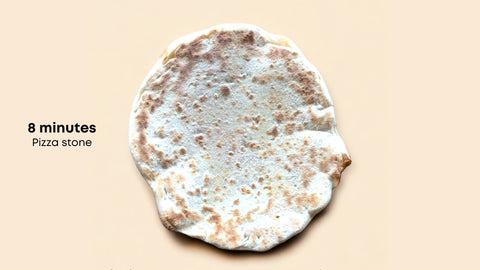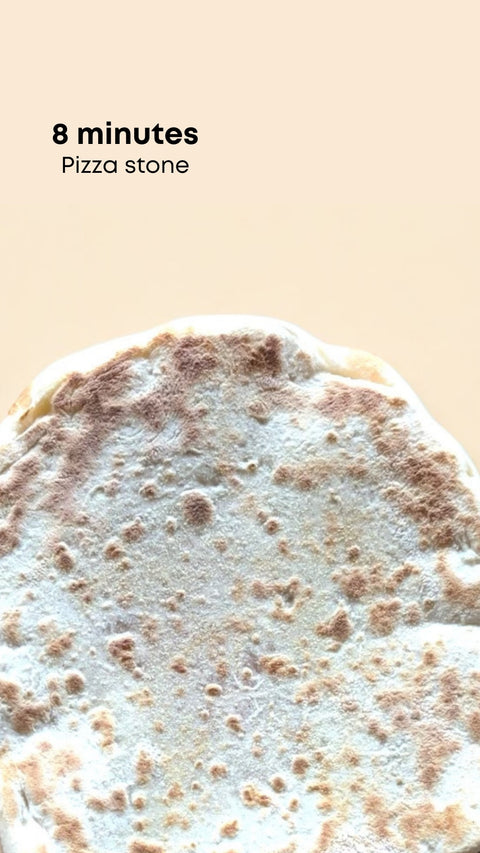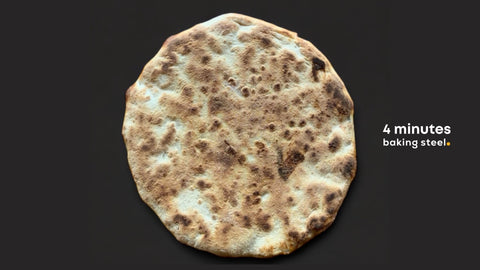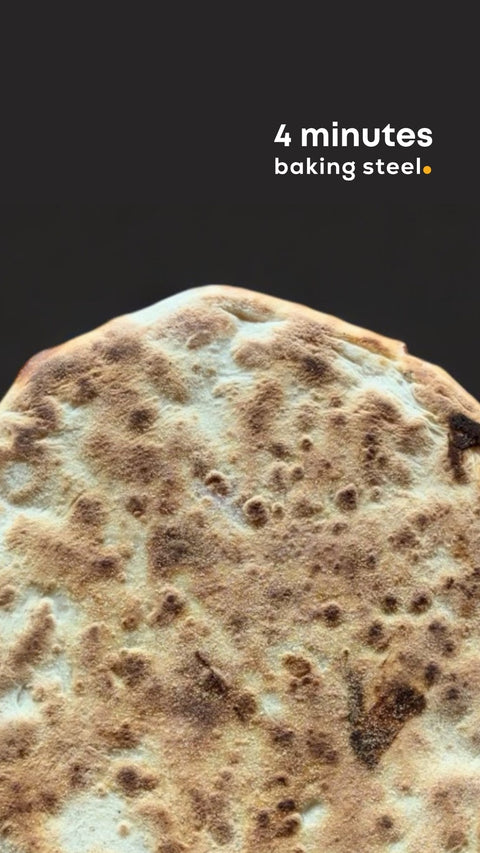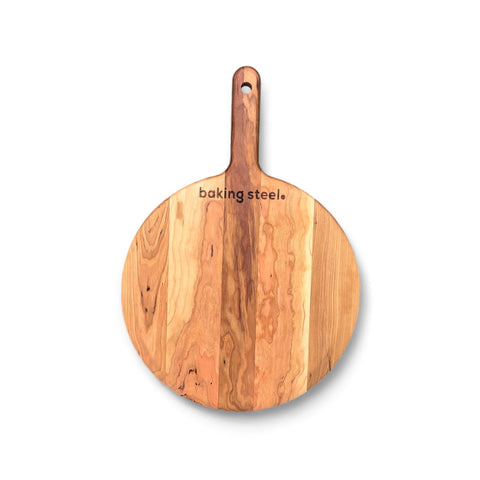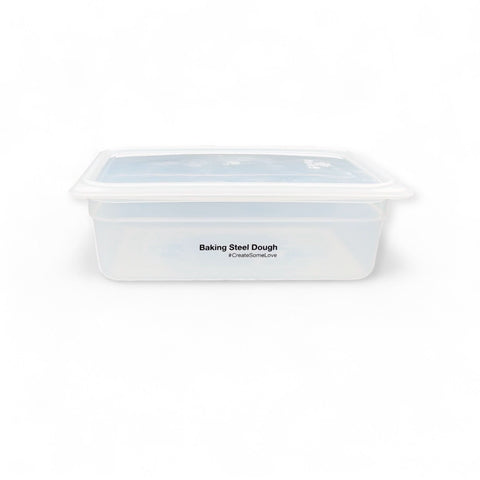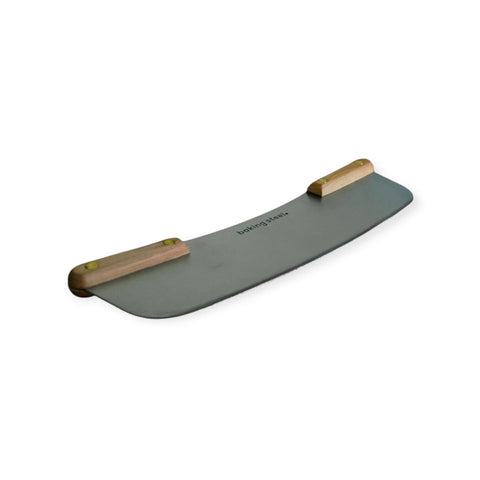There’s something magical about the perfect thin crust pizza. It’s light, crispy, and full of flavor—every bite offering that irresistible crunch we all crave. Whether you are a seasoned pizza pro or a just staring out making pizza at home. Thin crust pizza provides the perfect canvas for all of you pizza heads...
In this blog, we will take a deep dive into everything you need to know about making better than restaurant quality thin crust pizza right out of your home oven.... From mastering the dough to achieving the ideal bake on a Baking Steel, we’ve got all the tips, tricks, and techniques to help you become a thin crust pizza pro. Ready to take your pizza game and to the next level? Let’s get started!
Let’s start with the dough!
Our thin crust pizza dough recipe is straightforward and easy to follow. It’s essentially our 72-hour dough recipe, but we reduce the portion size to 150 grams per dough ball to achieve that perfect thin crust. After you ball up the dough, we recommend a 3-hour final proof—a fancy term for letting the dough rest at room temperature. Just make sure it’s covered and airtight to prevent drying out. This step is crucial for allowing the dough to relax and become easier to stretch, resulting in that crispy, delicious thin crust every time!
Toss some flour on your counter and place your dough ball right in the center. Coat both sides of the dough with flour to prevent sticking. Then, start pressing out the dough gently with your fingers, working from the center outwards. Since the dough has been resting, it’s going to be soft and supple, making it easy and fun to stretch. Work the dough gradually, allowing it to expand into a thin, even circle. The key is to be gentle and let the dough stretch naturally—this will help create that perfect thin, crispy crust you’re aiming for.

Topping ideas:
When it comes to our thin crust pizza recipe, less is more. Because the crust is thin, you’ll want to keep the toppings light to ensure it stays crispy. Adding too much sauce, for example, introduces a lot of moisture, which can seep into the dough and prevent it from achieving that perfect crunch. Instead, go for a thin layer of sauce and spread it evenly.
When it comes to toppings, think simple and balanced. Fresh mozzarella, a few slices of pepperoni, or a handful of veggies like arugula, mushrooms, or bell peppers work perfectly. Remember, the goal is to let the crust shine, so keep it minimal for the best results. Keeping your toppings light and evenly distributed is the secret to crispy, delicious thin crust pizza every time!

Best Cheese for Thin Crust Pizza: Fresh, Flavorful, and Perfectly Melted
When it comes to cheese for thin crust pizza, I love using a blend of high-quality fresh mozzarella and low moisture mozzarella for the perfect combination of flavor and melt. To elevate it even more, I like to add a bit of fontina, which brings a creamy, rich taste.
A pro tip: always buy your cheese in chunks and grate it at home. Pre-shredded cheese typically contains a starch coating that helps prevent clumping, but it also causes the cheese to brown too quickly in the oven. By grating your own cheese, you’ll get a better melt, a creamier texture, and that perfect golden color without over-browning.

And that’s it! If you want to achieve legendary thin crust pizza in your home oven, just follow these guidelines, and you’ll be well on your way to mastering the art of thin crust. Remember, the key is the combination of a ripping hot Baking Steel, the right dough preparation, and using fresh, high-quality ingredients.
If you have any questions or need some extra tips, feel free to email me at andris@bakingsteel.com or reach out on Instagram. I’m always here to help you take your pizza game to the next level. Let’s make some incredible thin crust pizza together!
Thin Crust Pizza FAQ:
How do I make thin crust pizza without a pizza stone?
To make thin crust pizza without a pizza stone, get yourself a Baking Steel Original. The Steel transfers heat 20 times faster than a traditional pizza stone, which translates into perfectly crispy crust every time. Unlike a stone, the Steel’s intense and even heat distribution ensures your thin crust cooks quickly and thoroughly, giving you that ideal texture. If you want a crisp, restaurant-quality thin crust pizza at home, the Baking Steel is your best friend. Once you try a Baking Steel you will not go back.
How do you get your pizza crispy in a home oven?
The key to achieving a crispy pizza crust at home is all about heat and airflow. First, preheat your oven as hot as it will go (typically 500-550°F) with a Baking Steel inside. The Baking Steel absorbs and transfers heat much faster than traditional baking surfaces, giving your pizza that restaurant-quality crispiness.
If your oven has a convection setting, use it! Convection is simply a fan that circulates the hot air, ensuring an even, consistent temperature throughout the oven. This helps cook the pizza evenly and crisps up the crust beautifully. With the right setup, you’ll get a crispy, delicious pizza every time.
What temperature is the best for thin crust pizza?
To achieve the perfect thin crust pizza, set your oven to 500°F (or as high as it will go). The high temperature is crucial for creating that crispy, golden crust and bubbling cheese in just a few minutes. If your oven has a convection bake setting, use it! Convection circulates hot air evenly throughout the oven, ensuring that your thin crust pizza cooks quickly and crisps up beautifully. The combination of a high temperature and convection baking is the secret to getting that restaurant-quality thin crust at home.
Where do I place my Baking Steel Original in my oven?
For the best results, place your Baking Steel Original about 7 inches from the broiler. This usually means positioning it on the first or second rack from the top. This setup allows the intense heat from the broiler to crisp up the top of your pizza while the Baking Steel ensures a perfectly cooked, crispy crust from below. It’s the ideal combination for achieving better than restaurant-quality pizza right at home.
What’s the best flour to use for thin crust pizza?
For the perfect thin crust pizza, we recommend using organic bread flour. Its higher protein content helps create a strong dough that stretches thin while still holding its structure, resulting in that crispy, light texture we all love. Our favorite choice is from Central Milling (centralmilling.com), known for their high-quality, organic flours. Using the right flour is a game-changer when it comes to achieving that perfect thin crust at home.
Can you freeze thin crust dough?
Yes, you can absolutely freeze thin crust pizza dough! After a 24-hour fermentation, we recommend balling it up and placing it in an airtight container or freezer bag. You can store it for up to 30 days without compromising the quality. When you’re ready to use it, just thaw the dough in the refrigerator overnight, and it’ll be ready to stretch and bake. Freezing dough is a great way to prepare ahead and always have a batch ready for those last-minute pizza cravings!
Is thin crust pizza healthier than thick crust?
Yes, thin crust pizza is generally healthier than thick crust. Because it uses a smaller portion of dough, you’re consuming less dough per slice, which means fewer carbs and calories. That’s one of the reasons we love thin crust pizza! We also tend to go a bit lighter on the toppings, which further reduces the calorie count while still delivering all the flavor you crave. If you’re looking for a lighter, more balanced pizza option, thin crust is the way to go.
Can I use parchment paper on my Baking Steel?
Yes, you can use parchment paper on your Baking Steel, and it’s a great way to keep your Baking Steel clean while preventing dough from sticking. However, do not use the broiler when parchment paper is inside your oven, as the high heat can cause it to burn. For the best results, use parchment paper when baking at high temperatures (up to 500°F), but switch to a pizza peel for broiling to keep everything safe and delicious!
Can I Make Crispy Pizza Without a Baking Steel?
Yes, you can make crispy pizza without a Baking Steel, but it might require a few adjustments. If you don’t have a Baking Steel, try using a preheated cast iron skillet or a heavy-duty baking sheet turned upside down. Preheat these in the oven at the highest temperature (500-550°F) for at least 45 minutes before baking your pizza. While these alternatives can help achieve a crispy crust, they won’t reach the same level of heat transfer as a Baking Steel, which is designed specifically for this purpose. For the crispiest, restaurant-quality results, a Baking Steel is still the best tool for the job!


